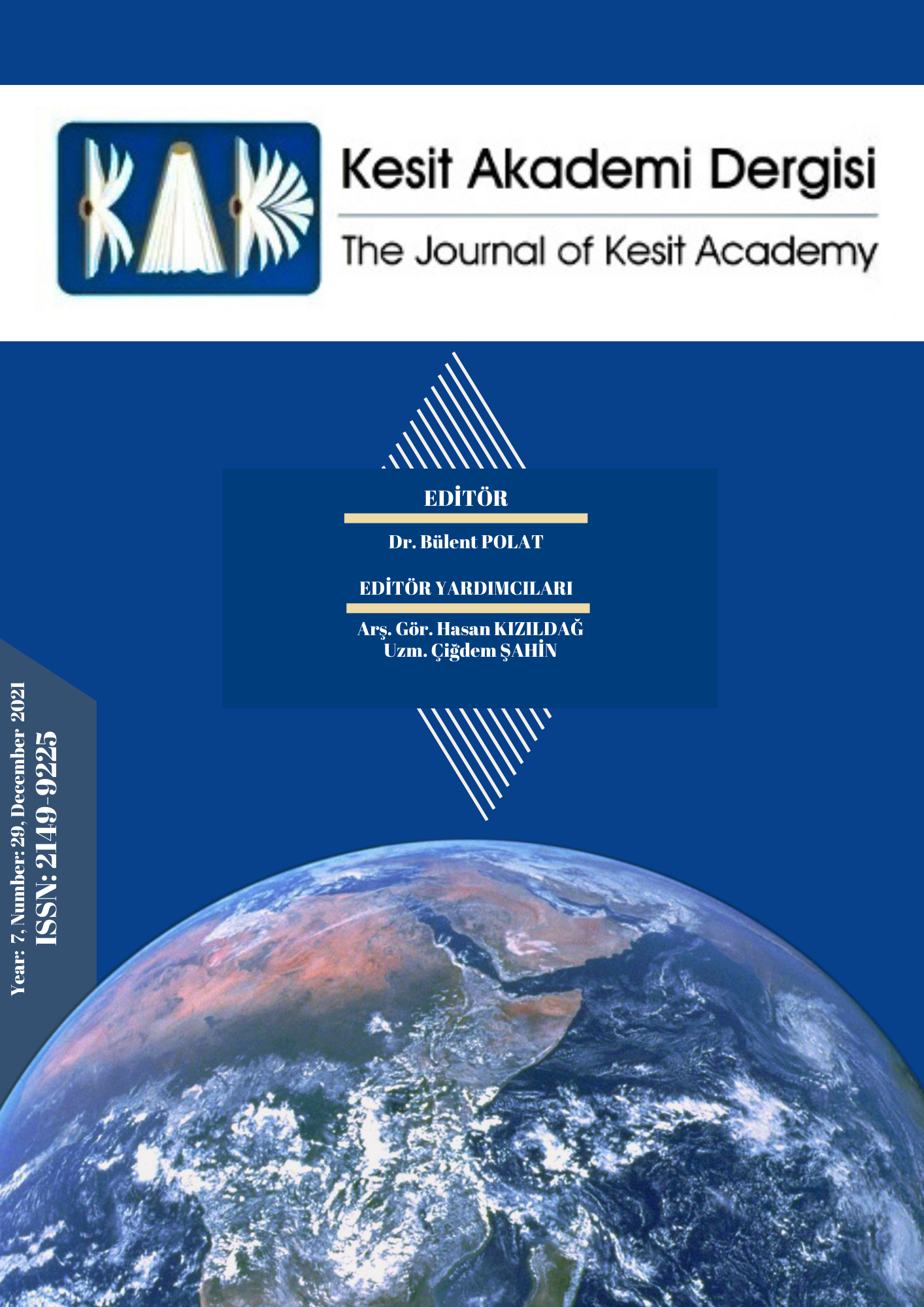Author :
Abstract
Yer altı, yerüstü ve suda yaşaması, tarihin her döneminde yılana güç atfedilmesine neden olmuştur. Doğadaki bitkilerle beslenmesi, kabuk değiştirerek derisini yenilemesi gibi özellikleri, zehri ve panzehri nedeniyle pek çok kültürde yılanla ilgili mitler ve söylenceler üretilmiştir. MÖ. 3. binden itibaren Mezopotamya’daki kültürlerde, Mısırlılarda, Antik Yunan ve Roma mitolojilerinde, Orta-Asya İslamiyet Öncesi Türk destanlarında, batı kültürlerinde kısaca pek çok kültürde yılanla ilgili söylenceler ve mitler, yılana insanlarca pek çok sıfat yakıştırıldığını göstermektedir. Özellikle sağlık ve şifa kaynağı olduğuna dair sıfatlar, yılanın kutsallaştırılacak düzeyde sağlık ve tıp ile ilişkilendirilmesine vesile olmuştur. Azerbaycan’ın Başkenti Bakü’deki, başlangıçta hastane olarak inşa edilen ancak sonradan farklı işlevlerle kullanıldığı anlaşılan iki yapının cephelerinde karşılaştığımız yılanlı armalar, MÖ. 3000’li yıllardan günümüze kadar gelen medeniyetler arası kültürel etkileşimin ortak ürünü sağlık ve tıpla ilişkili sembollerin XIX. yüzyıldaki yansımalarıdır.
Keywords
Abstract
The fact that it lives underground, above ground and in water has caused power to be attributed to the snake in every period of history. Myths and legends about snakes have been produced in many cultures due to its features such as feeding on plants in nature, renewing its skin by changing its shell, and its poison and antidote. In the cultures of Mesopotamia, Egyptians, Ancient Greek and Roman mythologies, Central-Asian Pre-Islamic Turkish epics, western cultures, in short, the myths and myths about snakes show that many adjectives have been attributed to the snake by people since the 3rd millennium BC. In particular, the adjectives indicating that it is a source of health and healing caused the snake to be associated with health and medicine at a level to be sanctified. The serpent coats of arms on the facades of two buildings in Baku, the capital of Azerbaijan, which were originally built as a hospital but later understood to have been used for different functions, date back to BC. the common product of inter-civilizational cultural interaction from the 3000s to the present day is the reflection of the symbols related to health and medicine in the 19th century.
Keywords
- Akça, T. (2013). Evaluation of the pergamon asklepieion with the medical point of view [Doc- toral Dissertation]. Çukurova University Health Sciences Institute.
- Aktemur, A. M. (1999). Anadolu Selçuklu devri kayseri yapılarında taş süslemeciliği *Yayın- lanmamış yüksek lisans tezi+. Atatürk Üniversitesi Sosyal Bilimler Enstitüsü.
- -------------. (2016). Bakü’deki Avrupa tarzı sivil mimarlık örneklerinde cephe düzeni. Zafer Ofset Yayıncılık.
- -------------. (2018). Bakü belediye binasındaki figürlü armaların ikonografik yorumu. Hitit Üniversitesi Sosyal Bilimler Enstitüsü Dergisi, 11(2), 831-845.
- Armutak, A. (2004). Doğu ve batı mitolojilerinde hayvan motifi II. sürüngenler, balık- lar, kanatlılar ve mitolojik hayvanlar. İstanbul Üniversitesi Veterinerlik Fakültesi Dergisi, 30(2), 143-157.
- Başar, Z. (1978). Halk hekimliğinde ve tıp tarihinde yılan. Atatürk Üniversitesi Diş Hekim- liği Fakültesi Yayınları.
- Bayat, A. H. (2016). Tıp Tarihi.
- Biray, N. (2013). Terim dünyamızda yılan: Kavram, anlam ve yapı bakımından. Avras- ya Terim Dergisi, 1, 95-113.
- Black, J.; Green, A. (2003). Mezopotamya mitolojisi sözlüğü, tanrılar, ifritler, semboller. Aram Yayıncılık.
- Cantay, G.(1998). Kadın Baniler ve Dârü’ş-Şifalar.
- Erdemir, A. D. (1996). Tıp tarihi ve deontoloji. Güneş & Nobel Yayınları.
- Erk, N. (1978). Veteriner tarihi. Ankara Üniversitesi Veteriner Fakültesi Yayınları.
- Güner, E.; Şeker, K. G. ve Güner, Ş. İ. (2019). Darüşşifalardan günümüz sağlık kurum- larına yılan sembolü. Lokman Hekim Dergisi, 9(1), 97-104.
- Hançerlioğlu, O. (2010). Dünya inançları sözlüğü. Remzi Kitabevi.
- Kemaloğlu, M. (2014). XI.-XIII. Yüzyıl Türkiye Selçuklu Devletinde Dârüşşifalar. Hik- met Yurdu, Düşünce-Yorum Sosyal Bilimler Araştırma Dergisi, 7(13), 289-301.
- --------------. (2014). Türkiye Selçuklularında içtimai müesseseler ve eserler. Akademik Tarih ve Düşünce Dergisi, 1(4),9.
- Leventi I. (1991). The iconography of health in the classical years. Hellenic National Archive of Documents.
- Ögel, B. (2014). Türk mitolojisi. Türk Tarih Kurumu Yayınları.
- Tavkul, U. (2007). Kültürel etkileşim açısından 12 hayvanlı Türk takviminin yayılışı. Modern Türk Araştırmaları Dergisi, 4, 24-45.
- Yöndemli, F. (2004). Tarih öncesinden günümüze yılan. Piramit Yayıncılık.
- ---------------. (2006). Hayat ağacı ejder yılan. Nüve Kültür Merkezi Yayını.
